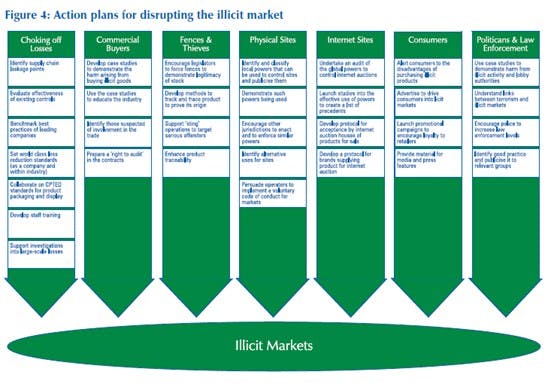Disrupting the Illicit Market for Stolen Goods - Latest Thinking
Date and Time:
May 13th - 3pm UK
Location:
Virtual
13 May 3:00 PM
Organisers:
Professor Martin Gill
Description

Two decades ago, Professor Martin Gill led a ground breaking global study across 16 countries on the illicit market in stolen goods, offering vital insights and strategies. In this meeting, we will start by exploring and reviewing together the progress against each of the seven strategies
1) Reduce vulnerabilities in the supply chain to choke off losses to the illicit network
• Leaky supply chains were a major focus and the report recommended that the industry should look to develop world-class loss prevention standards, has it?
• The research argued that there was a lack of awareness about thefts. Nowadays, what do manufacturers, supply chain operators and retailers know about what is stolen and where? Where are the knowledge gaps?
• There was pessimism about the effectiveness of security equipment, procedures and personnel. Is this the case today? Are the causes of pessimism clearly understood?
• It recommended improvements in the assessment of the risks of different products. Are risks assessed? How effectively? Are the findings systematically used to inform responses? To what extent has the industry adopted benefit denial in packaging design? Or CPTED / SCP in Store Design?
• The training of staff was viewed as particularly important in terms of understanding risks and how best to respond. How much awareness is there, and how can that be enhanced?
• The report suggested that retailers support investigations into large scale losses. Has this happened? Are the investigations making a difference or is it still a case of “whack a mole”?
2) Dissuade commercial buyers from purchasing supplies from the illicit network
• Motivated by opportunities for improved profits, the report evidenced that commercial buyers sought cheaper sources and purchased on the grey market and in some instances purchased stolen products. Is this still the case? How common is it? How aware are commercial buyers of the consequences of supporting an illicit market?
• It argued that there needs to be an industry initiative to penalise those who buy from illicit markets. Has this happened? Could it work? How would it be done?
• The need to persuade senior executives of retailers and wholesalers of the disadvantages of purchasing illicit and potentially stolen stock was seen as imperative. Has this happened and with what result?
• The paper raised the relevance of the emerging importance of corporate governance and the need to publicise the disadvantages from illicit behaviour. To what extent has corporate governance changed behaviour? What is the potential for it to do so more?
3) Dissuading fences and thieves from operating in the illicit market and disrupting those who do not respond
• Then the network of fences and consolidators was viewed as the most complex and least understood part of the illicit market. Is this still the case?
• The paper argued that while reforming thieves at a societal level has much to commend it – indeed it is the Holy Grail - the role of the retail sector here was at best marginal. Has this changed? Is there now a way? Do those who buy stolen goods care anymore than they did back when the study was commissioned?
• The paper found that thieves and fences act as though there are no effective sanctions to their actions, they were influenced by the very low likelihood of ever being convicted. Have policing and prosecution processes improved? Could they? Are there new ways and new lessons to be learnt?
• Making goods traceable is key. If thieves/fences have goods on them that can be shown to have been stolen it may hinder them, although more likely will facilitate better and more effective prosecutions. This was lacking twenty years ago, where are we now? With what results and what expectations?
4) Disrupting physical sites where illicit trading in stolen FMCG takes place
• The paper outlined activities designed to increase the levels of disruption of physical sites where illicit trade takes place (e.g. flea markets), by tackling the owners or occupiers of the marketplaces; tackling others who profit from them; or address the sites themselves. Is this still an area of concern? Why and how?
• It argued the FMCG industry should influence (better). For example, regulation of sites to adopt and enforce codes of practice to disrupt and drive out illicit trade. Or promote enforcement activity. Or seek to publicise and shame sites that facilitate illicit activity. Have these happened and are these still relevant?
• The public needs to be educated about where they can be sure of buying licit produce and where they risk being sold stolen goods. And helped to understand the consequences. Has this happened?
5) Disrupting Internet sites where illicit trading in stolen FMCG takes place
• Interestingly, this was more of an emerging issue than a mainstay problem twenty years ago! How significant is this issue today? What are its current characteristics? What are the gaps in responding?
• Then the industry was being encouraged to develop protocols to govern the acceptance by Internet sites of goods for sale and influence sites to adopt them. Has this happened? With what result? What are the opportunities and drawbacks for regulation?
• Then, a ray of hope shone on the finding that the seller often failed to deliver. It argued, ‘it is possible, therefore, that the availability of stolen goods via the internet is not as great as it may seem’! To what extent is it now possible to monitor the availability and quantity of stolen goods on the internet?
6) Dissuading consumers from buying illicit stolen FMCG
• It was not obvious to consumers that buying stolen goods supports a large illicit network (linked to very serious crime gangs) that causes real harm. To what extent is this still the case? Has the education of consumers improved? Could it and would that be impactful? Are there any examples of “harm” that might dissuade consumers from buying stolen goods?
7) Persuading politicians and law enforcers to take seriously the problem of illicit trading in stolen FMCG and to detect, investigate and prosecute illicit actors
• The paper argued that governments, their agents (such as trading standards enforcers) and regulatory bodies should proactively disrupt illicit trading and need to be persuaded that such action is a priority. Has this happened and is it still relevant? What would make this (more) impactful?
• Because reaching out to so many locations and individuals raises immense resource and other implications for the FMCG industry targeting influencers has much to commend it. Who are these today (e.g. politicians, others)? How can they be engaged?
• Police interest was globally seen as wanting, actions often driven by local outrage. What drives action today and how can that be enhanced? Who are the different policing groups that can be meaningfully engaged and what are the best ways of doing so (what arguments best get ‘policers’ involved)?
In the meeting, we will hear from retailers and industry associations and their responses to these questions and an update on their own actions.
This meeting is for retailers, FMCG's and academics only
Main office
ECR Community a.s.b.l
Upcoming Meetings
Join Our Mailing List
Subscribe© 2023 ECR Retails Loss. All Rights Reserved|Privacy Policy
